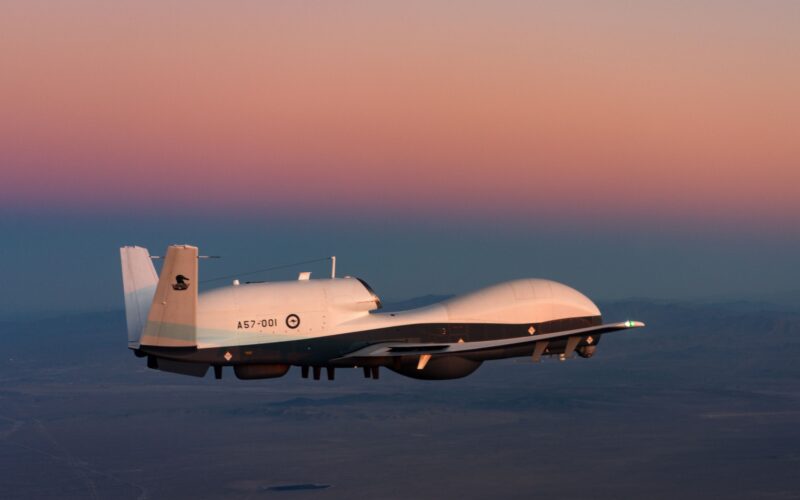Northrop Grumman and the Royal Australian Air Force (RAAF) announced the arrival of the first MQ-4C Triton uncrewed aircraft at RAAF Base Tindal.
The MQ-4C Triton, designated AUS 1, made a three-segment journey from Naval Air Station Patuxent River, Maryland, to Tindal in the Northern Territory of Australia. Northrop Grumman collaborated closely with the RAAF to prepare for this deployment and support ongoing operations.
“Under the newly reformed No.9 Squadron, I have no doubt that the MQ-4C Triton will play a pivotal role in securing Australia’s strategic areas of interest, including our maritime approaches,” Australia’s Chief of Air Force Air Marshal Stephen Chappell commented.
The remaining Tritons are on track in their production schedules and will be operated by the Number 9 Squadron from RAAF Base Edinburgh in South Australia and RAAF Base Tindal.
Today I joined @RichardMarlesMP at RAAF Base Tindal at the introduction of our first MQ-4C Triton to the RAAF fleet.
— Air Marshal Stephen Chappell (@CAF_Australia) July 31, 2024
The Triton has been delivered following an incredible amount of work from those in Defence, and our friends in the @USNavy, @DeptofDefense & industry. pic.twitter.com/RWPDXAY8Kr
The first flight of Australia’s MQ-4C Triton was completed at Palmdale in November 2023. Australia’s Triton program remains on schedule, with three additional aircraft under construction at Northrop Grumman’s Palmdale, California, facility.
Northrop Grumman is also establishing support infrastructure for the Triton systems in Australia, including ground stations at RAAF Base Edinburgh and integration facilities at RAAF Base Tindal. The company is training an Australian workforce to support these operations, leveraging expertise from US Navy Triton operations.
Specifically designed for maritime missions
The Northrop Grumman MQ-4C Triton is a High-Altitude Long-Endurance (HALE) drone based on the Global Hawk equipped with a multi-sensor mission payload (radar, electro-optical, infrared, electronic support measures).
The main sensor of the Triton is a radar, the AN/ZPY-3 Multi-Function Active Sensor (MFAS) developed by Northrop Grumman. It is fitted with an Active Electronic Sensor Array (AESA) antenna and can conduct surveillance in a single sweep covering up to 2,000 square miles (5,200 square kilometers).
The Triton boasts a higher operating altitude and longer endurance than medium-altitude systems and offers an operational range of 7,400 nautical miles (13,000 kilometers). It can monitor 1 million square miles (2.5 million square kilometers) of ocean in one flight mission.

